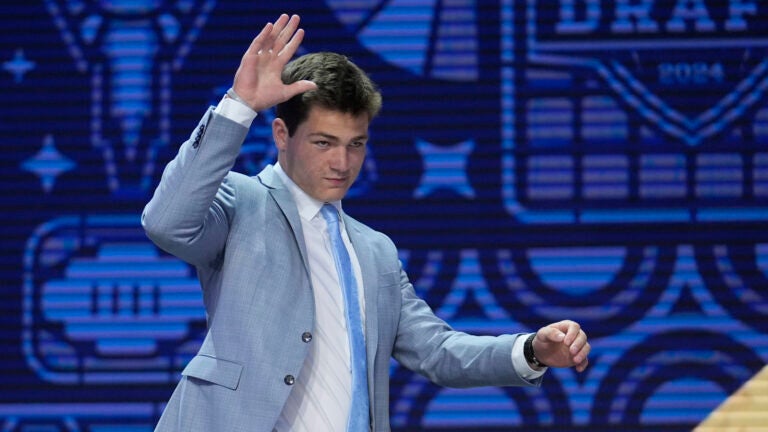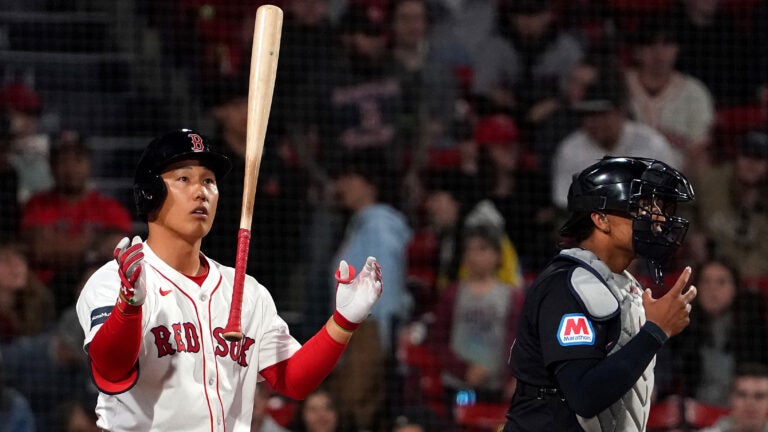For all the roster science, it’s simple lack of execution that’s failed the Red Sox
Shuffling guys between rotation and relief doesn't change that they have to pitch well — period.
COMMENTARY
Forty-seven years ago this week, Billy Martin picked his lineup out of a hat.
Managing Detroit in 1972, the future George Steinbrenner punching bag was staring down the Yankees (among others) in a frenetic, four-team AL East race. Losers of four straight and 13 of 18, Martin suspected his Tigers were tight, so he broke out a trick his minor-league team had dared him to do a couple years prior: He put his pitcher ninth, threw the other eight names in his cap, and let fate fill out the lineup card. Slugging first baseman Norm Cash hit first. Cleanup went to shortstop Ed Brinkman, a career .224 hitter, just ahead of the usual leadoff man.
Lo and behold, it worked — the Tigers beat eventual Cy Young winner Gaylord Perry in the first game of a doubleheader, Brinkman delivering the tying double. That the Tigers then lost Game 2 when Martin went back to the scientific method only made the story better.
“I didn’t realize,” Martin told reporters between games, “I had such a smart hat.”
It was the lead of most all the baseball roundups nationwide the next day. To whatever degree it was a drummed-up parlor trick, Martin used the hat scheme at least twice more in his career, including for a week in April with the 1977 “Bronx Zoo” Yankees. That year, it came out after a 2-8 start, middle-of-the-order regular Chris Chambliss landing eighth and staying there for what became a six-game winning streak.
“I always said it doesn’t matter where you hit,” Chambliss said after one of his first games down bottom, in which he’d had three hits and five RBIs, “as long as all the bats are in there.”
Which is the point for our purposes. Lineups are optimized with deep-rooted alchemy today, just like everything else. Defensive positioning is set by the batter, based on tendencies and logged on cheat sheets stuffed in pockets and hats. The high-percentage matchup is king, with an iPad in every dugout, a video room in every clubhouse.
If Alex Cora rolls into the Fenway Park interview room on Friday and announces Christian Vazquez at leadoff, J.D. Martinez second, and Rafael Devers seventh because that’s the way they’d tumbled onto his desk, Twitter will have its Trending Topic for the evening. And heaven forbid they lose. “Boston Sports Tonight” might literally try him for treason via four-way split-screen. (My money’s on DJ Bean getting to wear the barrister’s wig.)
I get the sabermetric science. I even endorse it. Facts trump feelings, even if the product becomes four-hour games with 14 strikeouts and five pitching changes a side. But, to a large degree, it’s about what Chambliss said and little else. If your best players play their best, Andrew Cashner can close games and it won’t matter.
Is 63-59, after winning a back-and-forth battle and lazy matinee in Cleveland, more about the failings of the starting pitchers or the relievers? Did the former cause the latter, or has the latter gotten off easy for failing on its own?
To be blunt: Who cares?
We can parse and reparse, but it will not change some simple truths. Chris Sale and Rick Porcello have pitched well at points, even very well, but they’re having the worst seasons of their MLB careers, and David Price might be, too. Brandon Workman is having a breakout season, but that felt far away when Cleveland needed 12 pitches to tie Tuesday’s game against him in the ninth, especially after Marcus Walden lost Monday’s game in five. Workman has blown five saves in large part because his high-leverage OPS against (.615) is twice what it is in the rest of his outings (.292).
Matt Barnes has gamely navigated the meat of lineups, been incredibly willing to shift around the late innings, and might strike out 16 batters per nine, second-best in franchise history. He’s also allowed a run in roughly one of every three clean innings he’s been given this season — 12 of 37 appearances overall, and 5 of 15 specifically in the ninth.
It’s not near good enough, and where they’re placed and how they’re slotted doesn’t change that it’s not near good enough.
Comparing pitching and hitting in that regard isn’t perfect, but consider Rafael Devers. Have you noticed he’s hit in eight of the nine potential lineup spots this season? Everywhere but leadoff, and a machine in almost all of them. A 1.098 OPS, with 40 extra-base hits in 45 games at No. 2. A 1.007 at No. 5, a .902 at No. 4, an .860 at No. 6. His overall value to the team can certainly be optimized, but the primary remains the hitter hitting.
Devers took the league hits lead with his historic 6-for-6, 4-doubles, sneaky-bad baserunning show on Tuesday night, reminding he has a chance to join some heady company.
He had nine hits (five for extra bases) in the series, making Terry Francona’s decision to intentionally walk him in the seventh inning of a 2-1 game his team needed on Wednesday entirely defensible. Even if it brought up Xander Bogaerts, who had two hits Monday, two more Tuesday, and a solo homer to back up Devers’s in the third at the time.
By now, you know it didn’t work. It’s the third time in a month a team chose facing Bogaerts over facing Devers, and every one’s ended poorly. Another three-run homer against the Dodgers on July 12, a single to load the bases two days after that, and then Wednesday.
“Yeah, sometimes it’s a little bit like pick your poison,” Francona said. “I mean, Devers is in one of those streaks right now where it looks like he’s playing softball. … We’ve got an open base and we’ve got a guy that’s 8-for-9. Pitching to him, that didn’t seem to make sense.”
Francona used to say much the same thing about what his David Ortiz/Manny Ramirez power plant did to the Red Sox opposition, and it’s amazing to consider Devers/Bogaerts already exist close to that context. In January, Devers was coming off a 24-error season in which he hit .240, and Bogaerts was the Scott Boras guy headed toward his walk year who looked like the odd Killer ‘B’ out. Now, the idea they’ll be manning the left side of the infield together deep into the next decade is this season’s greatest comfort.
Bogaerts hardly sounded regretful when he talked to WEEI.com’s Rob Bradford about signing for six years and $120 million in April, a deal that’s clearly well below market now. For one, Bogaerts said knowing he’s secure beyond this season put his mind at ease. For two, less mentioned, he’s got an opt out after 2022.
These things can change quickly, of course. But they are something for the Red Sox to build around. Much like a starting rotation with three Cy Young winners and Chris Sale in it.
Of course, it then becomes paramount those linchpins deliver. As, again, Billy Martin reminds us.
His 1982 A’s were coming off a 1981 playoff trip, but their pitching staff collapsed in front of one of the American League’s worst offenses. In late June of what was ultimately a 68-94 season, his team batting an abysmal .227, Martin grabbed one of his coaches’ hats and tossed in the names.
Oakland got shut out on four hits.
“First time we lost when I did it,” Martin told reporters. “I did it just to loosen them up. It’s not the spot you hit in. It’s the bat you swing.”
Or the pitch you throw when it matters, be that the first, the fifth, or the ninth.







